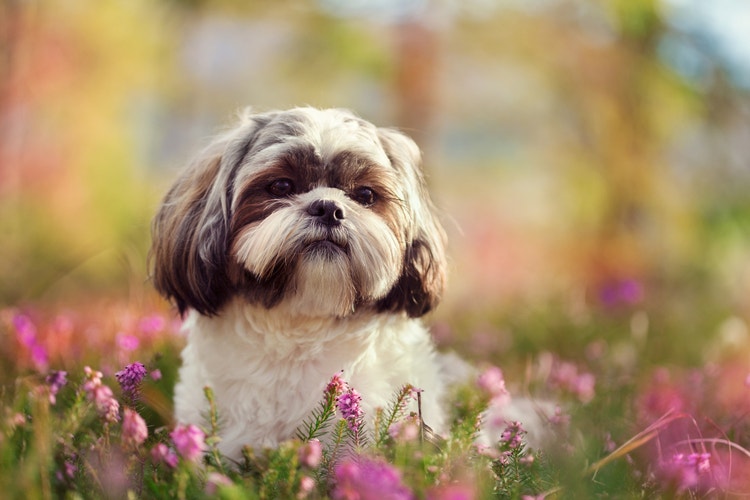
Shih Tzu


Where Are Shih Tzu From?
The Shih Tzu originated in East Asia, China, and Tibet. There are paintings and documentation of the Shih Tzu dating back nearly 1000 years in China. This breed got their name because of their resemblance to the lion, hence the direct translation of Shih Tzu, meaning “little lion.” They were bred to be a house pet and companions for the royal family in China in the 17th Century. The royals cherished these breeds so much that they refused to sell or trade them. They were developed as a cross between the Lhasa Apso, Tibetan Terrier, and the Pekingese.
The Shih Tzu first arrived in the US in the 1930s and was recognized by the American Kennel Club in 1969.
Caring for a Shih Tzu
How Often Do I Need to Feed My Shih Tzu?
How Often Do I Need to Feed My Shih Tzu?
Shih Tzu puppies need to be fed four small meals a day to prevent hypoglycemia, since this breed is small and doesn’t yet possess fat reserves. Adult dogs may be fed twice daily depending on the brand and amount of food. Dry food is a good choice for the breed, since it helps reduce tartar and combat dental disease. They are also considered a brachycephalic breed, so it is important to avoid overfeeding them, since it can contribute to breathing difficulties.
Do Shih Tzu Shed?
Do Shih Tzu Shed?
The Shih Tzu is a non-shedding breed, but requires routine grooming and maintenance to maintain a healthy coat. Without a proper grooming regimen (which entails weekly bathing and daily brushing), the coat will become matted and knotted, which can be painful if left untreated.
Are Shih Tzu Healthy Dogs?
Are Shih Tzu Healthy Dogs?
The Shih Tzu is a brachycephalic breed, which means that they have an abnormal, pushed-in, or flat face, causing them to suffer from a number of respiratory problems. In some cases, this condition could require surgery to correct the abnormal conformation. They are also prone to quite a few congenital ocular diseases. Because of this, if you are thinking of owning a Shih Tzu as a young puppy, you should train them to sit still for daily eye drops. Regular trips to your veterinarian or your local veterinary ophthalmologist can get expensive, so it may be best to get pet insurance at an early age.
Shih Tzu are predisposed to: proptosis of the eye, cataracts, retinal dysplasia, corneal ulcers, eye infection, entropion, epiphora, luxating patellas, dental disease, otitis externa, atopy, brachycephalic syndrome, tracheal collapse, chronic valvular heart disease, and intervertebral disk disease.
How Do You Train a Shih Tzu?
How Do You Train a Shih Tzu?
Positive reinforcement is a great method for training a Shih Tzu. They are not food motivated, which can make the training process difficult. Shih Tzu are prone to ocular disease, making it vital to adjust them to the application of artificial teardrops at a young age. Teeth brushing and grooming measures should also be started at 6 to 8 weeks of age, as this breed is prone to dental disease and hair matting.
Do Shih Tzu Need Daily Walks?
Do Shih Tzu Need Daily Walks?
The Shih Tzu is not the most energetic breed. They do not require much exercise, sustaining on a 10 to 15-minute walk twice a day. Exercise in the warmer months needs to be done with caution, since they do not tolerate heat well. They make great apartment pets because of their small size and low energy level.
What Are the Physical Traits of a Shih Tzu?
Shih Tzu Facts
Other Breeds to Explore
References
- Morris, Desmond. Dog: The Ultimate Dictionary of Over 1,000 Dog Breeds. Trafalgar Square, 2002.
- American Kennel Club. The Complete Dog Book. Random House Digital, Inc., 2006.
- Wilcox, Bonnie and Chris Walkowicz. The Atlas of Dog Breeds of the World. T.F.H Publications, Inc., 1995.

